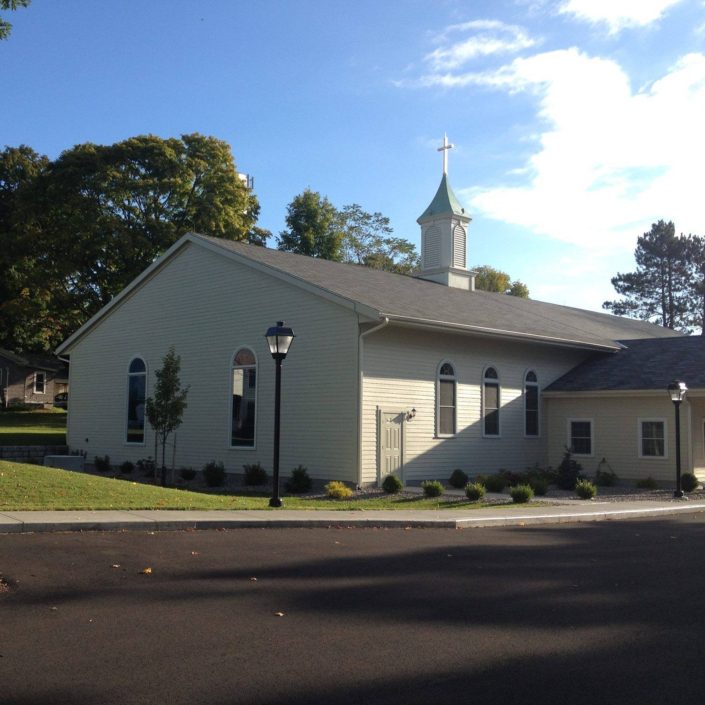
Land Where The Partridge Drums
A History of the Akwesasne Mohawk Nation
Williams in Oneida
Written and illustrated by Darren Bonaparte

Catharine Watch, Tht Little Dauphin* • Metropolitan Toronto Library Board
Following the war he moved to Oneida, where he found considerable success as a bilingual missionary and converted a number of traditionalists to the Episcopal Church. Oneida at the time was divided by religious and political factionalism; this situation was further complicated by external pressures to relocate west to Wisconsin. Williams’ ambitions were satisfied with the powerful role as intermediary between the Oneidas and the external forces: namely, the powerful Ogden Land Company (which sought the valuable Oneida territory) and the governments of New York and the United States.
Although he established a church at Oneida and translated Christian texts into Haudenosaunee languages, his missionary successes were overshadowed by his involvement in the purchase of Menominee and Winnebago land in 1821. This sale was rejected by the remaining traditionalists and the faction of Christians converted prior to Williams’ arrival, and they sought to have him recalled. His Episcopalian faction approved of migration to Wisconsin but were less than satisfied about the deal itself. Williams, who may have been a paid agent of the Ogden Land Company, found himself in a very precarious position with the Oneidas. His dreams of establishing an “Indian Empire” on the western frontier were greatly diminished. In 1822 he led a second delegation to Green Bay And convinced some Menominee leaders to sign two “treaties” allowing the Oneidas to share a portion of their territory. This deal was repudiated by the rest of the Menominee tribe, but their complaints went unnoticed by the United States government and its War Department. Ultimately only a small faction of Oneidas relocated to a tract of 65,540 acres at Duck Creek, Wisconsin.
Williams established a new mission at Duck Creek, sought the conversion of the Winnebago, Menominee, and Metis, and joined the Masonic Lodge at nearby Green Bay. He married the daughter of a local French merchant and established himself as a prominent citizen of the community. He continued to act on the behalf of the Oneidas and other native tribes in the area by traveling on their behalf to Washington and New York, but his days as an influential power among them were soon to pass. Two new Episcopal clergymen arrived on the scene, and although Williams became a deacon in 1826, his frequent absences from the area prompted them to replace him as the senior agent of the Episcopal Church and urge his removal. By 1842 he had been admonished by the Bishop and forbidden to officiate at Episcopal meetings in Wisconsin. He denied his detractors’ claims, insisting there was a conspiracy against him, but his days of power and influence in the West were over.
Williams returned to Akwesasne and attempted to establish a mission, but this was largely a failure by 1848. He was by then an old man with little money and no credibility, all of which he blamed on his native heritage. He told a genealogist working on a history of the Williams family that his great-grandmother Eunice had married an English physician who had also been taken captive by the Kahnawake Mohawks. This attempt to add yet another prestigious white forebear to his pedigree would not be the last time Williams tried to deny his Mohawk ancestry.
Next week: The Lost Dauphin
By Darren Bonaparte, historian and author of The Wampum Chronicles. Reprinted with permission.
Darren Bonaparte is a cultural historian from the Akwesasne First Nation. He is a frequent lecturer at schools, universities, museums, and historical sites in the United States and Canada. He has written four books, several articles, and the libretto for the McGill Chamber Orchestra’s Aboriginal Visions and Voices. Darren is a former chief of the Mohawk Council of Akwesasne. He is the creator of The Wampum Chronicles and historical advisor to film and television. He currently serves as the Director of the Tribal Historic Preservation Office of the Saint Regis Mohawk Tribe.















